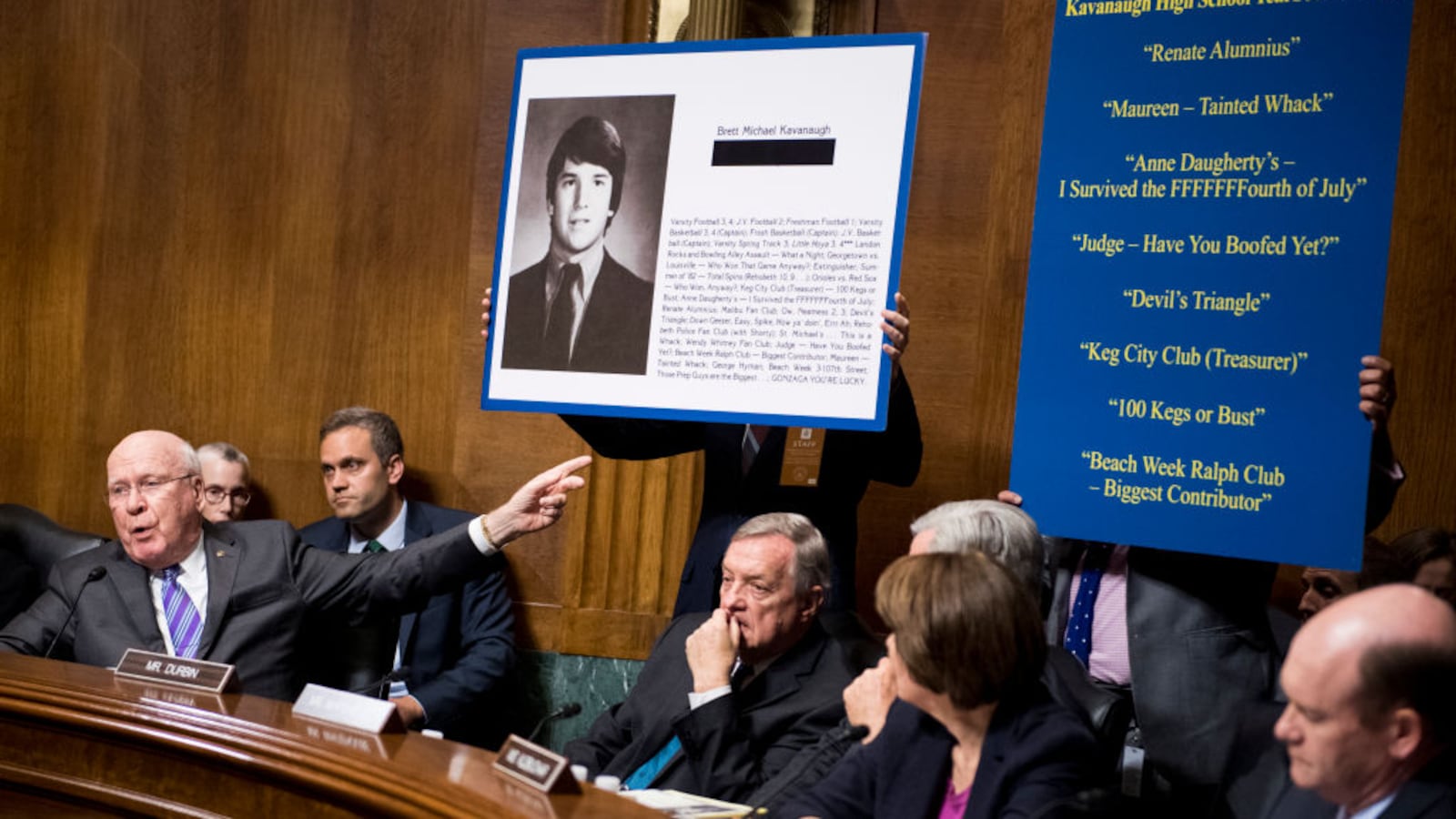In many ways, U.S. Supreme Court nominee Brett Kavanaugh’s hearing Thursday was similar to other major events that educators have turned into teaching moments.
But this one had an extra level of delicacy, as it dealt directly with high schoolers’ behavior — and started with psychology professor Christine Blasey Ford’s voice shaking as she told senators that Kavanaugh had sexually assaulted her as a teenager.
A few teachers told Chalkbeat they thought it was important to devote class time to the proceedings. In other cases, students carved out time themselves to watch. Here’s what they said happened.
In a New York City math class, teacher Laura Mourino decided to put the hearing on for interested students at her high school, Harvest Collegiate. (Students were also given an option to sit elsewhere with other work.) It felt like a important historical moment, she said, and was relevant to some students’ end-of-semester projects — to design a new electoral system using mathematical functions.
The morning portion of the hearing, which centered on Ford’s testimony, prompted student questions both about the process of choosing a Supreme Court justice and about the combative language being used by some lawmakers.
Afterwards, Mourino said, a few girls approached her. “‘I have to tell you,’ they said, ‘if something like that happened to me, I would shut up. Look what they did to her,’” she recalled. That left Mourino planning follow-up discussions with her students.
“I feel like I had a moral obligation to show this to students and be a part of history, but I also feel depressed — that I may have created a sense of discouragement for someone who might want to come forward,” she said.
On Wednesday, Michelle Finley, a psychology and sociology teacher at Whitmer High School in Toledo, Ohio, realized that her students didn’t know about the upcoming hearing. Many also hadn’t heard of “#metoo.” So Finley spent time talking about both, then watched and then discussed some of the hearing with students.
“I wanted students to see for themselves,” she said. “I wanted them to see the testimony, not just commentary.”
The class discussion included at least one moment of debate. “One young man posed the possibility that Dr. Ford might not be telling the truth and we processed that information as a class,” she said.
“Most importantly, I wanted all of my students to know that if they ever experienced sexual harm and they told me about it, that I would believe and support them,” Finley told Chalkbeat.
Ilan Cohen, who attends Charles E. Smith Jewish Day School in Rockville, Maryland, said that students gathered independently to watch during a break in the day. Later, students watched about a half-hour of the hearing in a history class.
“The idea that almost 50 high schoolers were watching quietly to me was incredible,” he said. His peers are interested in politics, but also were familiar with the places at the center of Ford’s story.
“A lot of us grew up in these ZIP codes. We connected with the story,” he said. “This took place in our own backyard.”
Still, he said his friends tried to be sensitive to the fact that not everyone would want to hear the details of an alleged assault.
In the common area, he said, “I turned the volume down so passersby wouldn’t have to hear something they don’t want to hear.”


